The MIDAS project’s demo sites across Europe are in full activity this summer, here are a few snapshots we received from our partners.
In Italy, a colorful tapestry of industrial crops thrives on marginal lands at the MIDAS demo site near Bologna. These snapshots were taken during our last visit in June: safflower in full bloom, crambe ripe for harvest (which was successfully completed on July 8th), and hemp and miscanthus flourishing. Located inside the experimental farm of the University of Bologna in Ozzano dell’Emilia, this demo site is entirely rainfed and it is managed with organic farming. The feedstock from all these crops can be effectively used to produce a variety of biobased products, ranging from biodegradable mulching films to lubricants and bio-composites. Beyond yields, researchers are closely monitoring insect biodiversity for the second consecutive year, comparing the activity in these fields with the neighboring alfalfa field, which was also in full bloom.
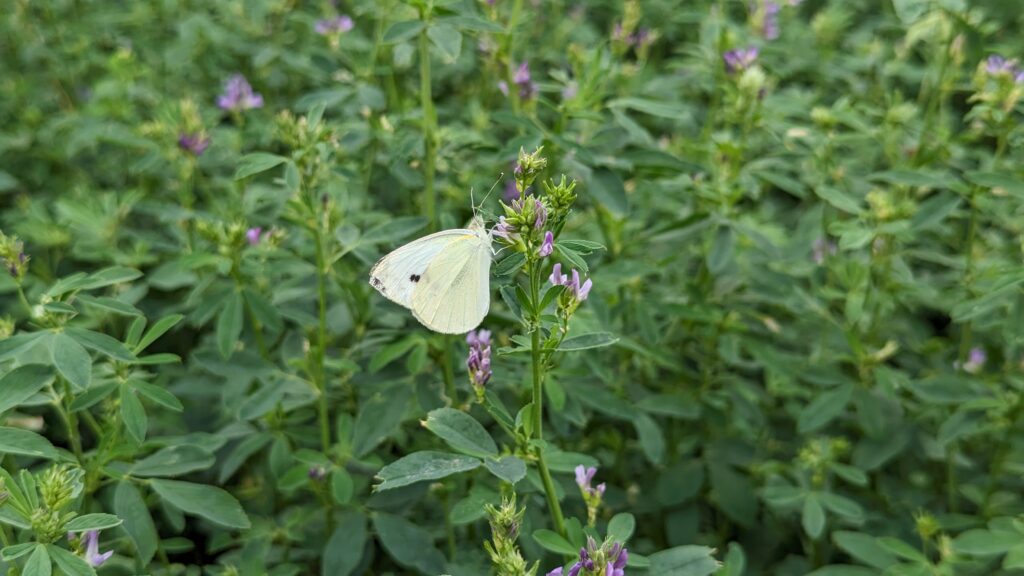
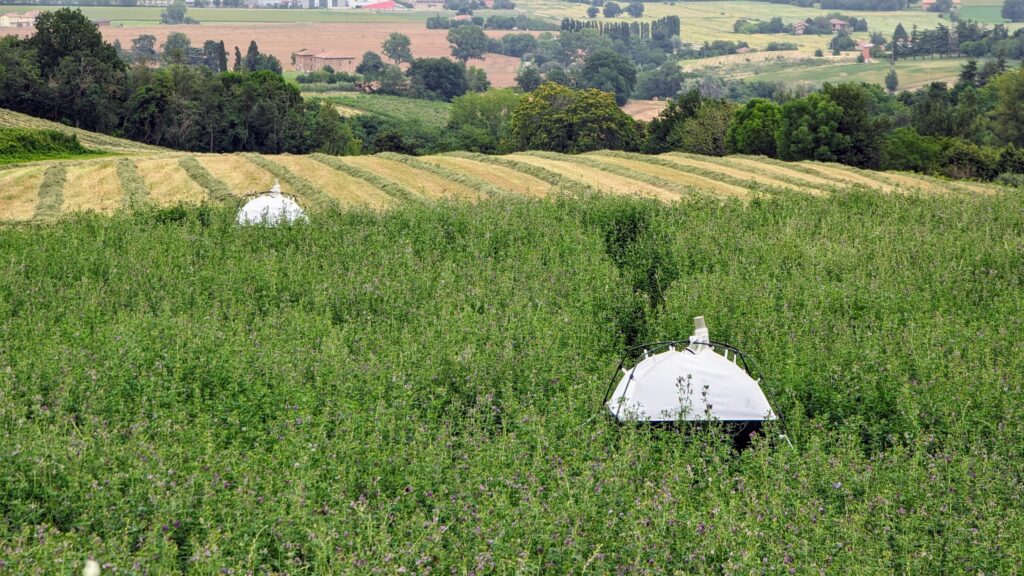
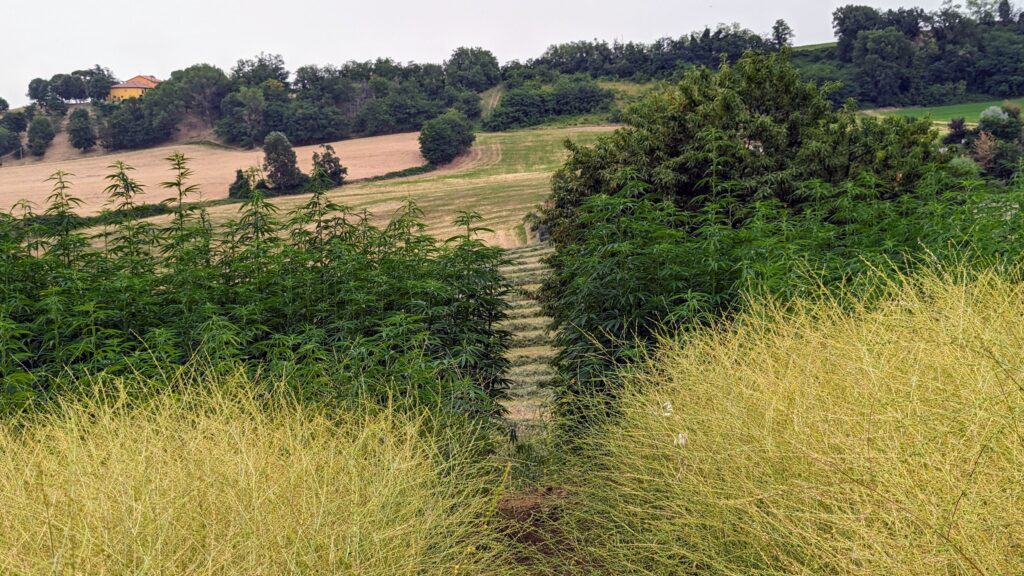
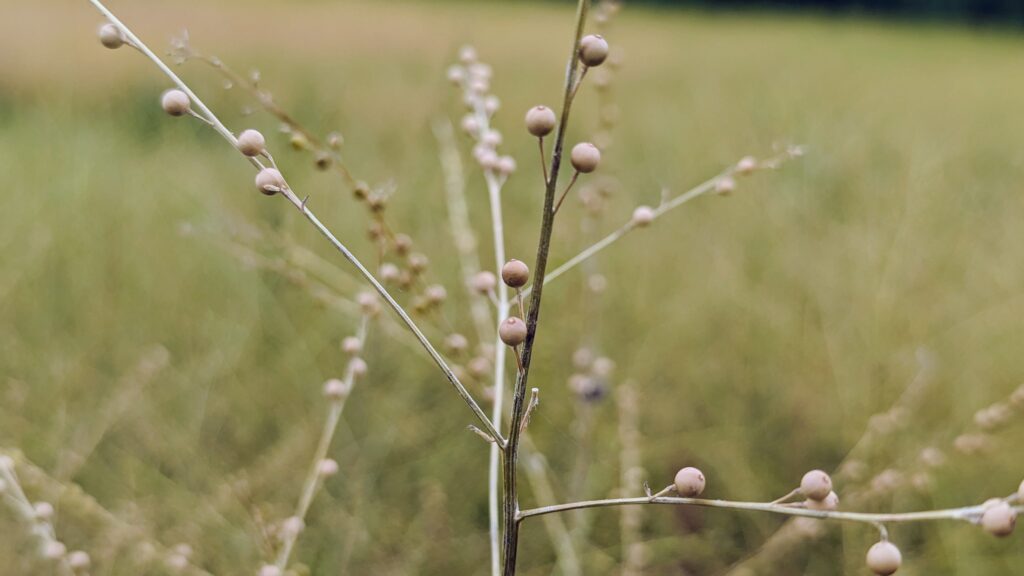
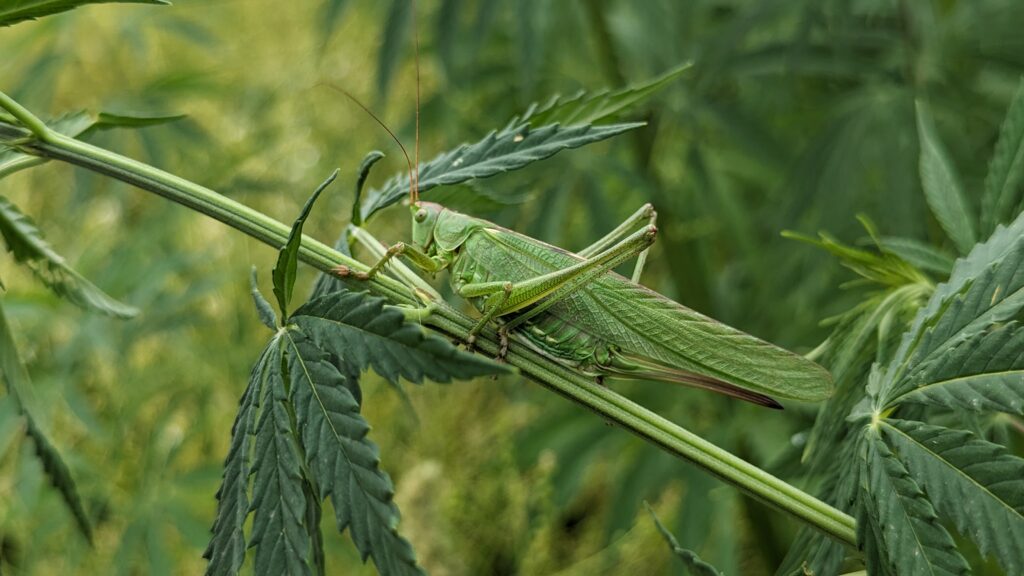
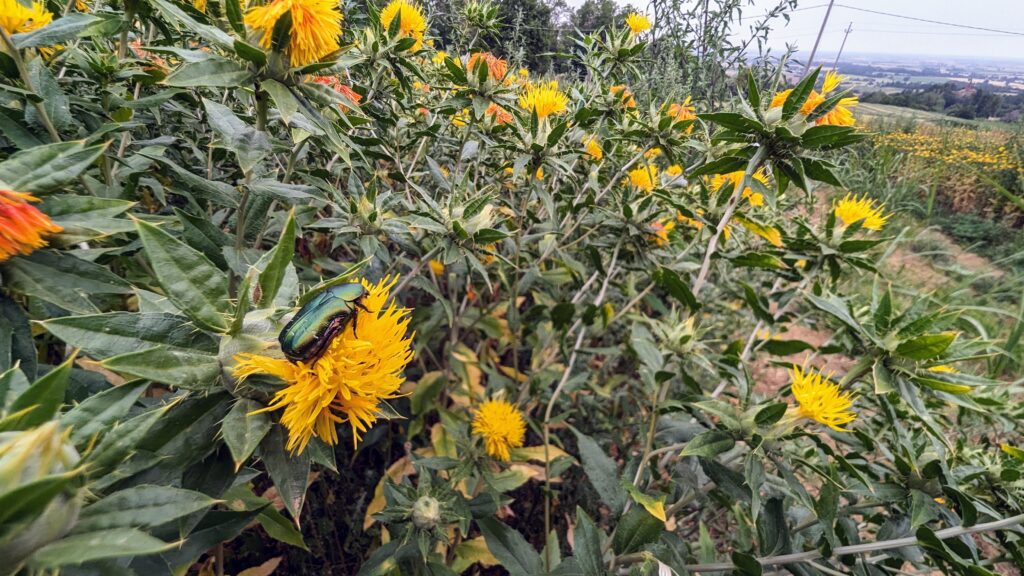
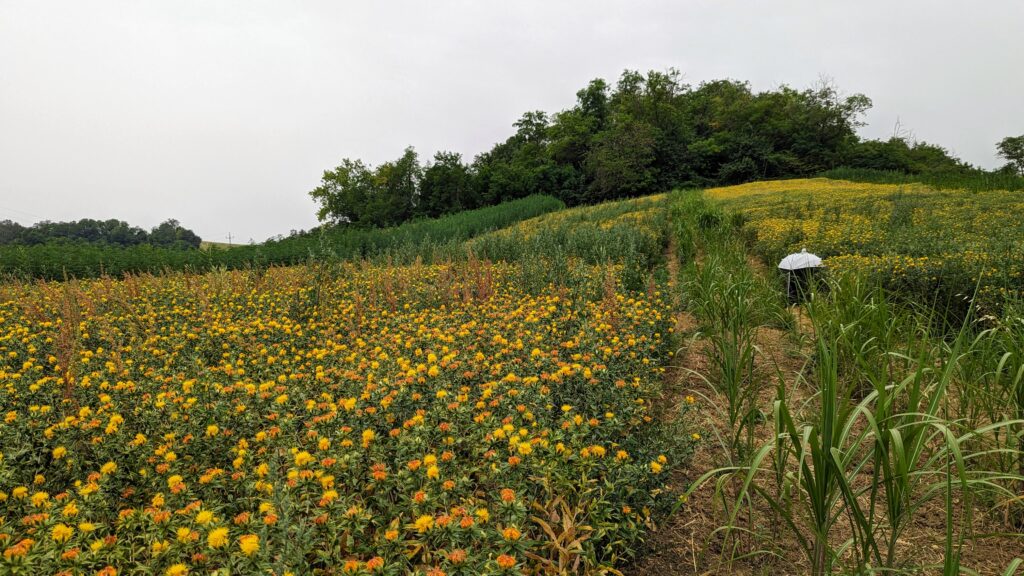
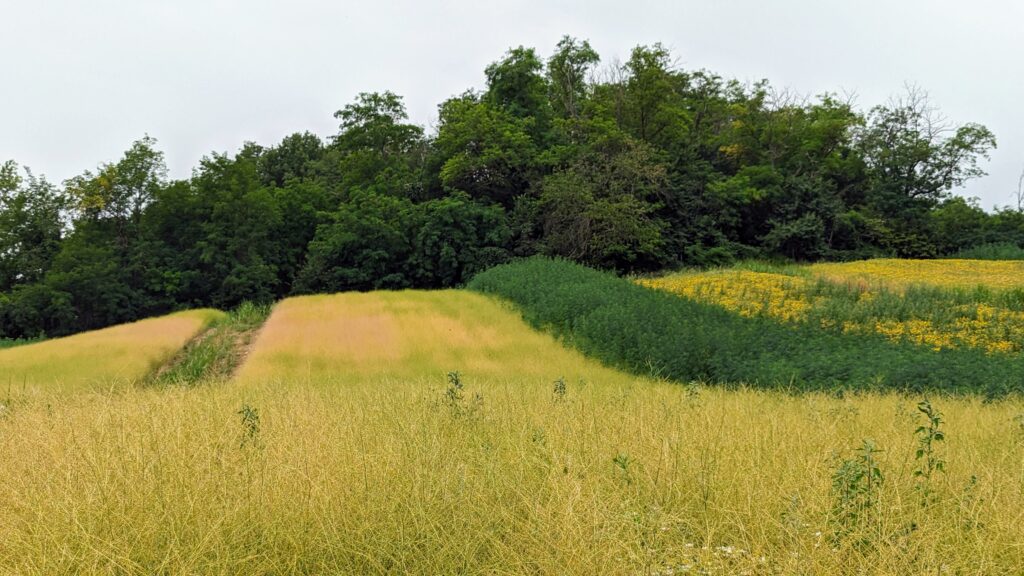
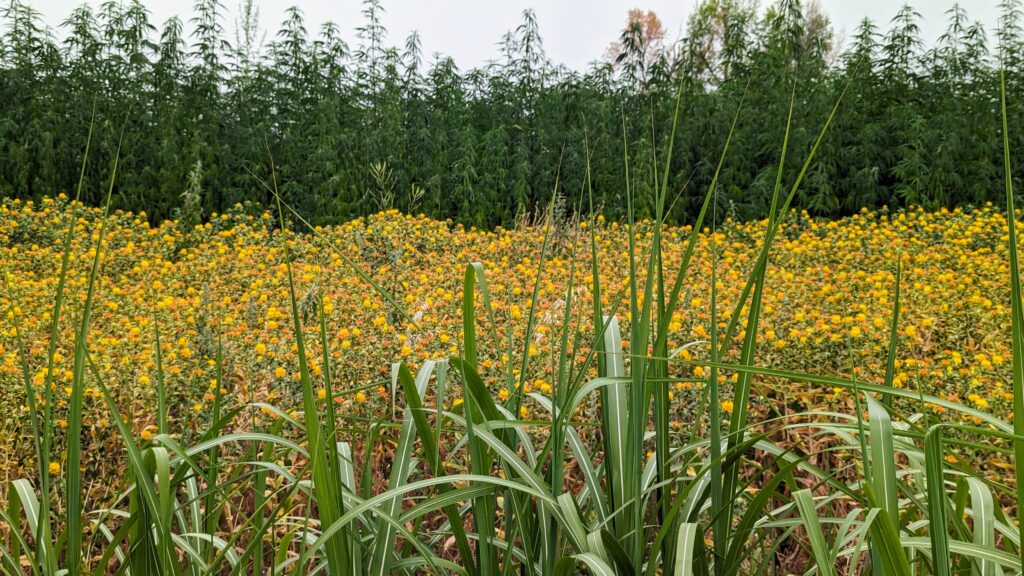
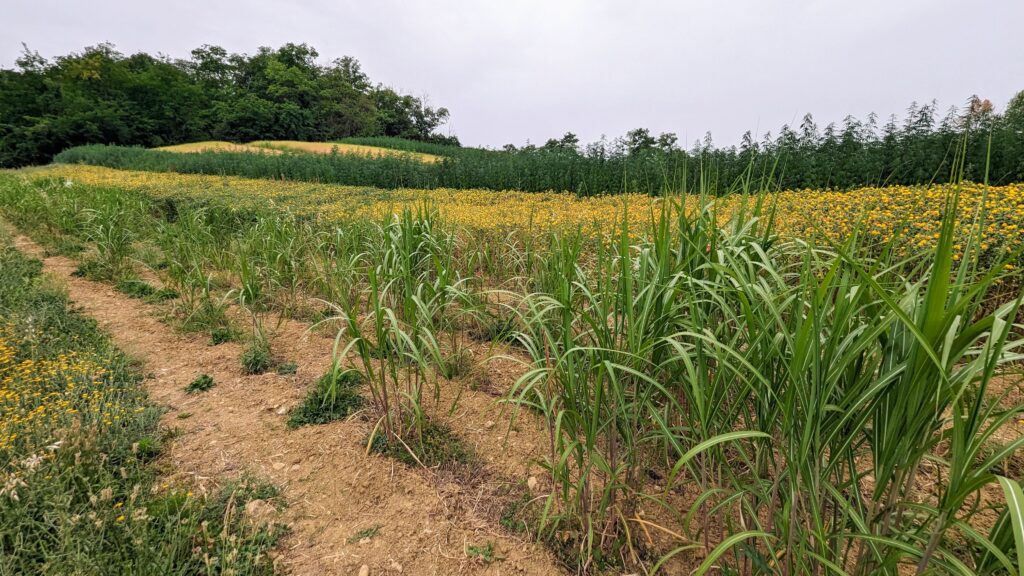
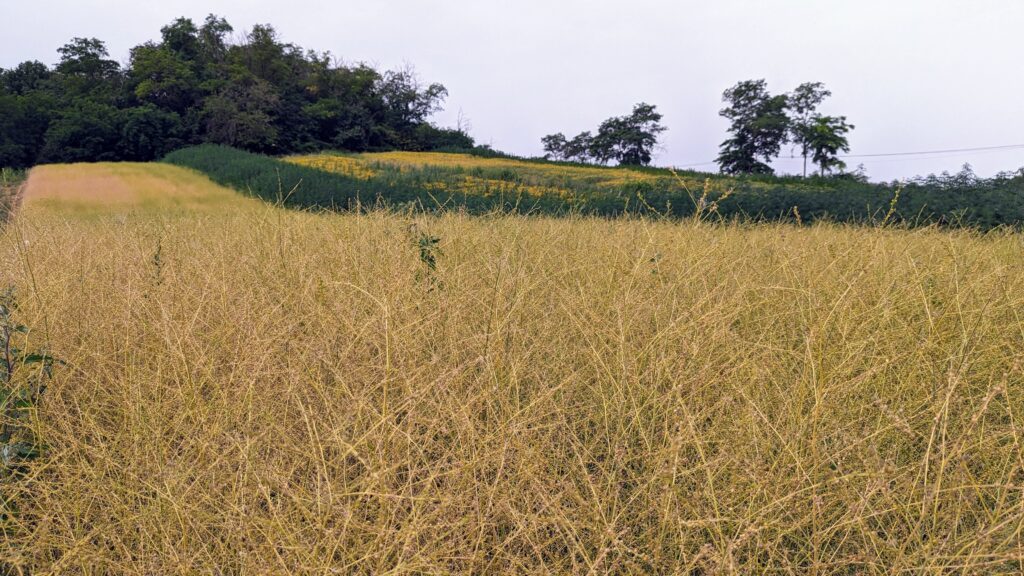
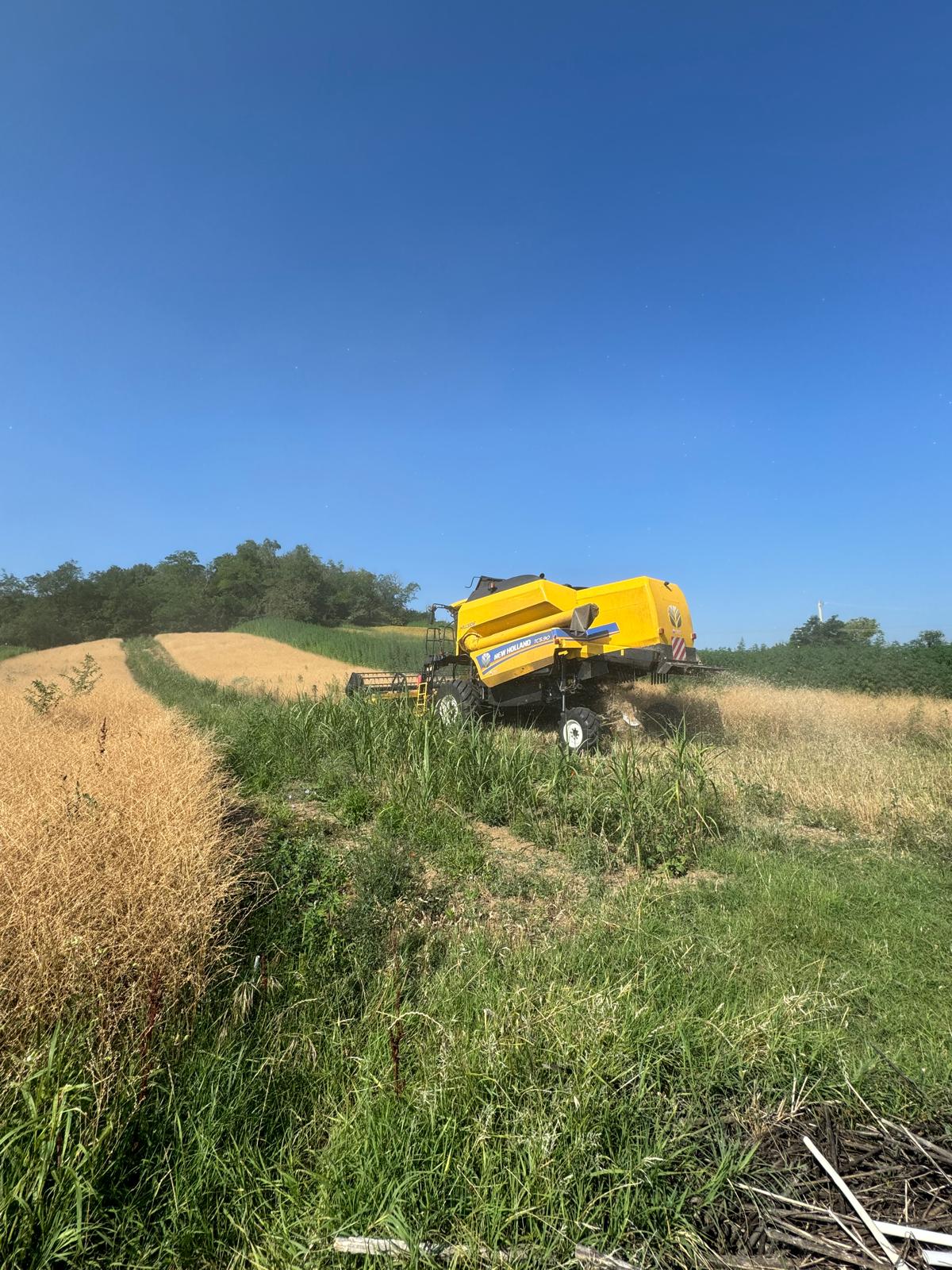
In Germany, a range of annual crops are also grown in strip cropping at the demo site of the University Hoennheim, near Stuttgart. The photos in the gallery below were taken during one of the field visits in June, you can see melilot, crambe and industrial hemp thriving on a marginal land characterized by shallow and stoney soil.
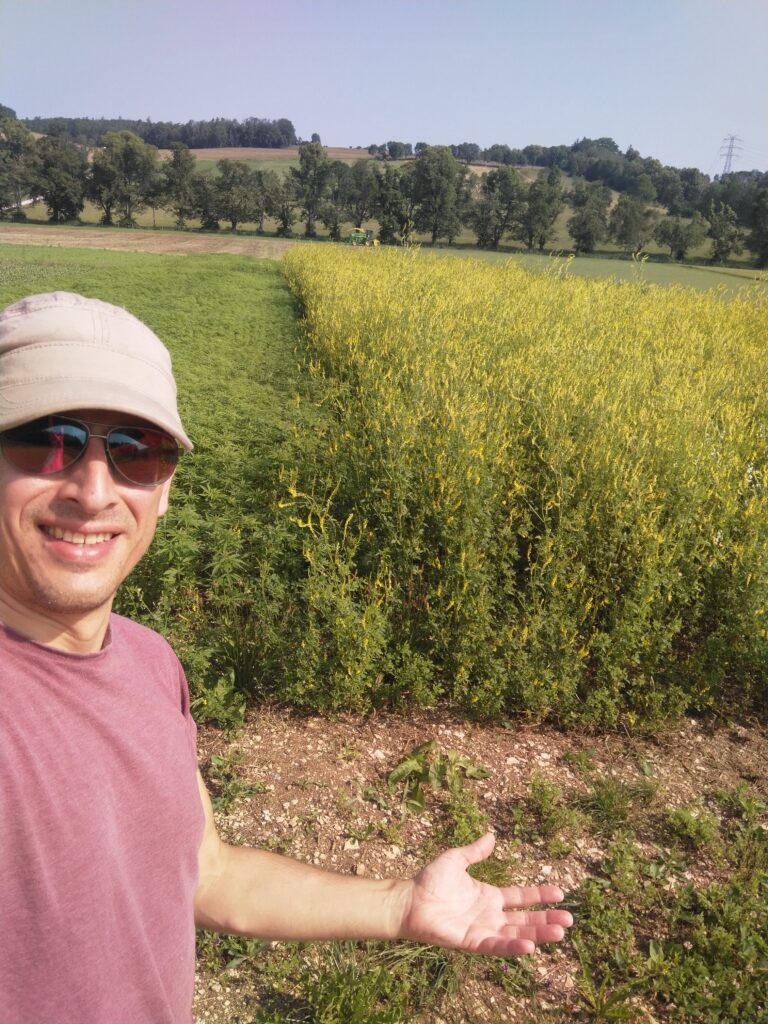
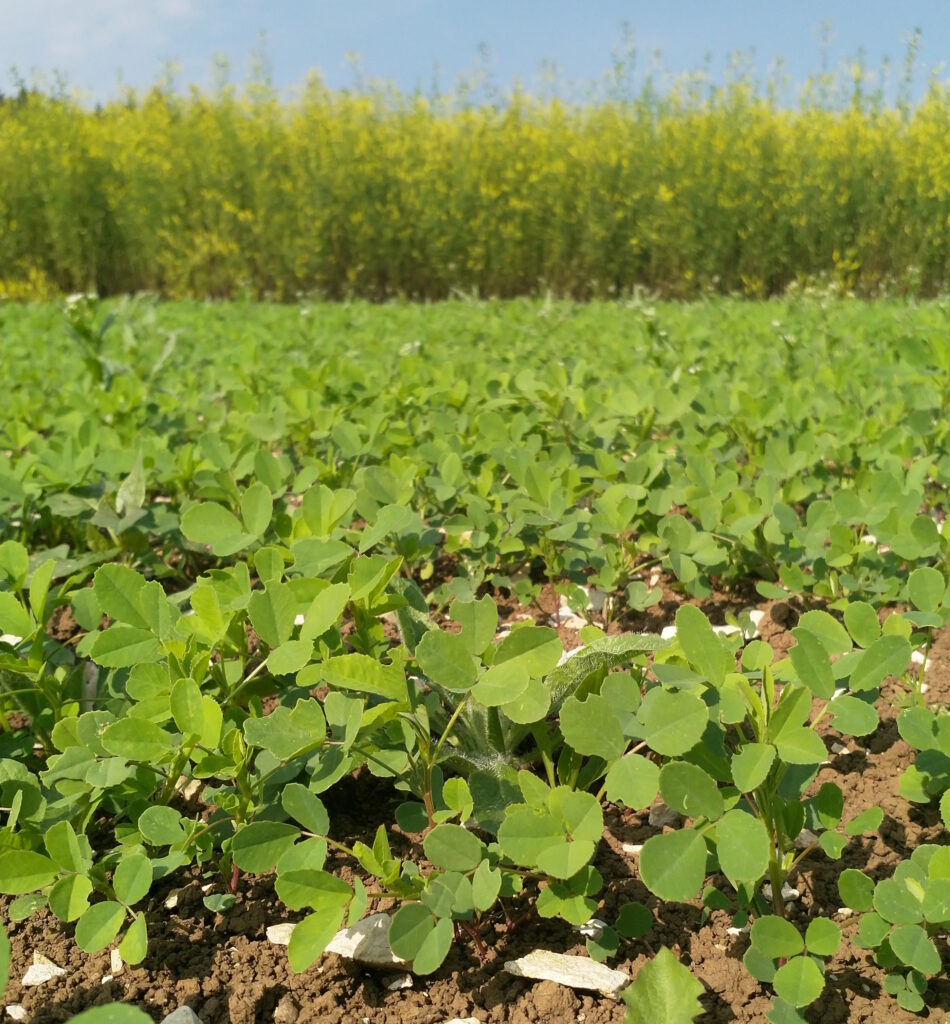
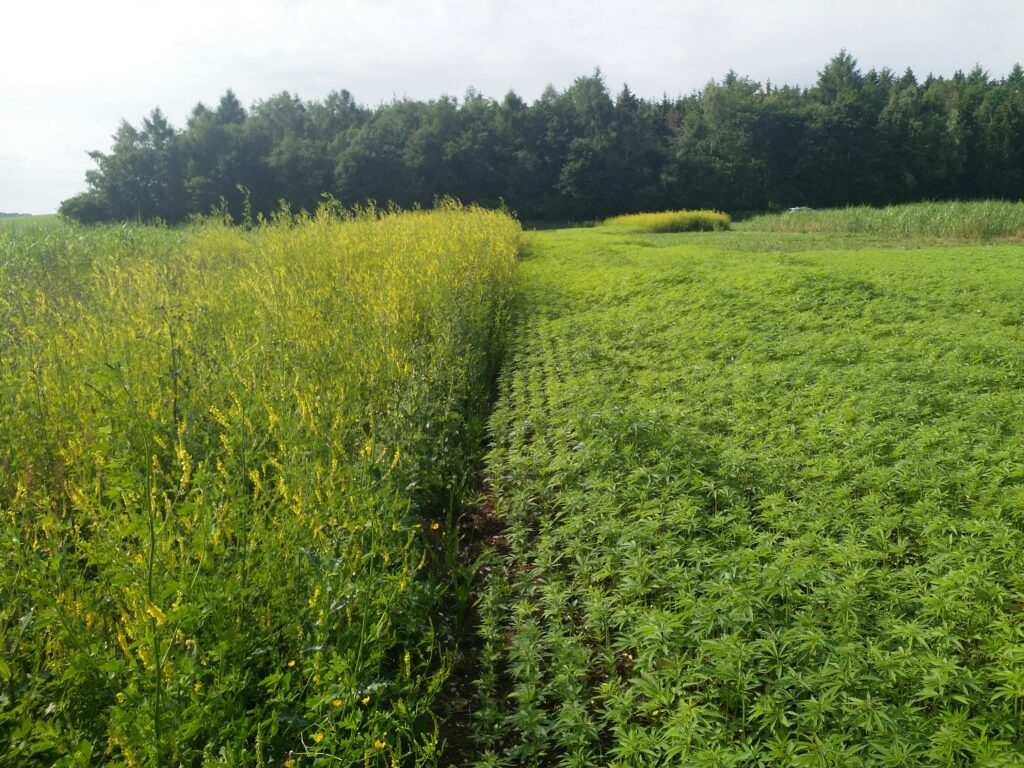
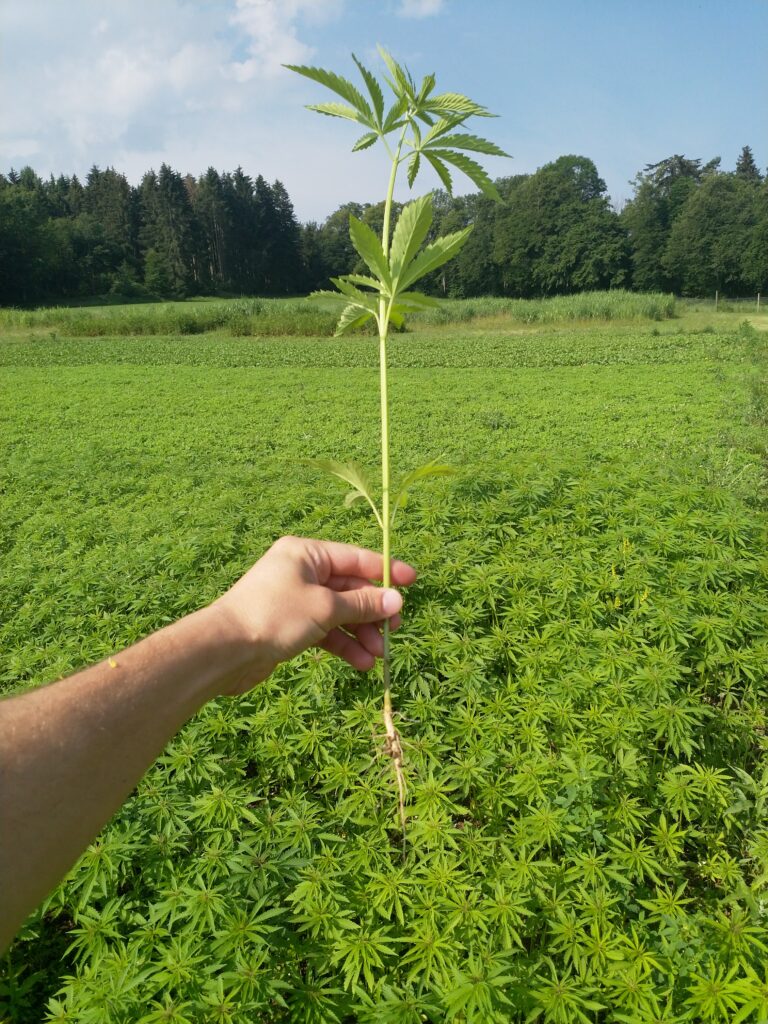
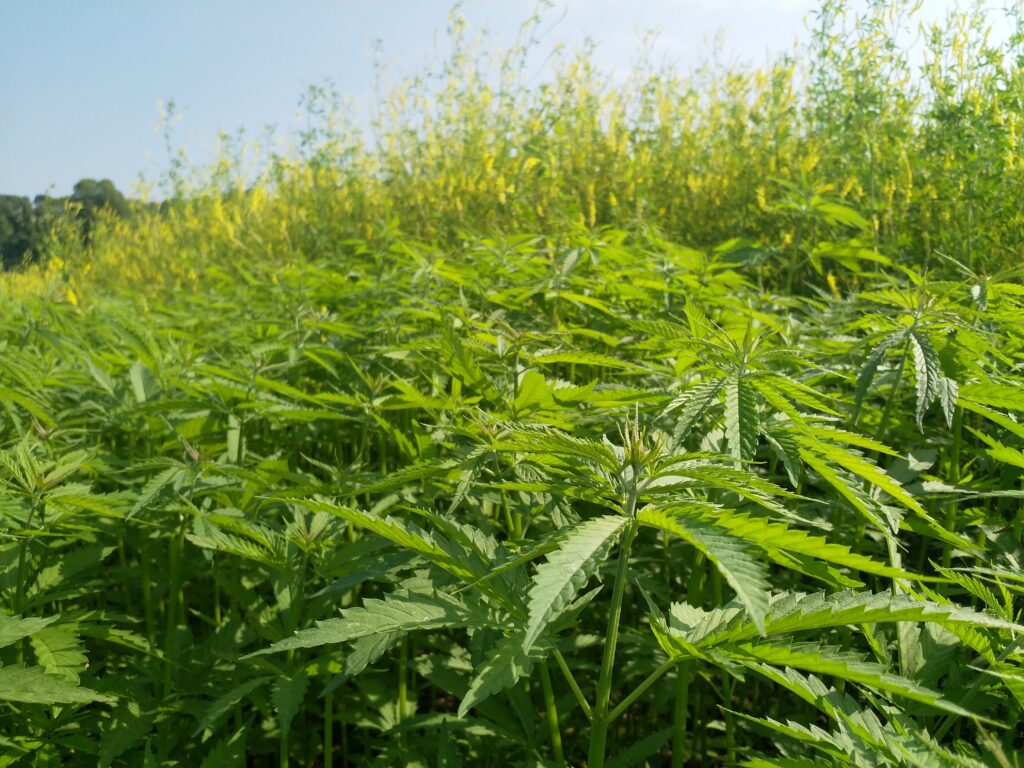
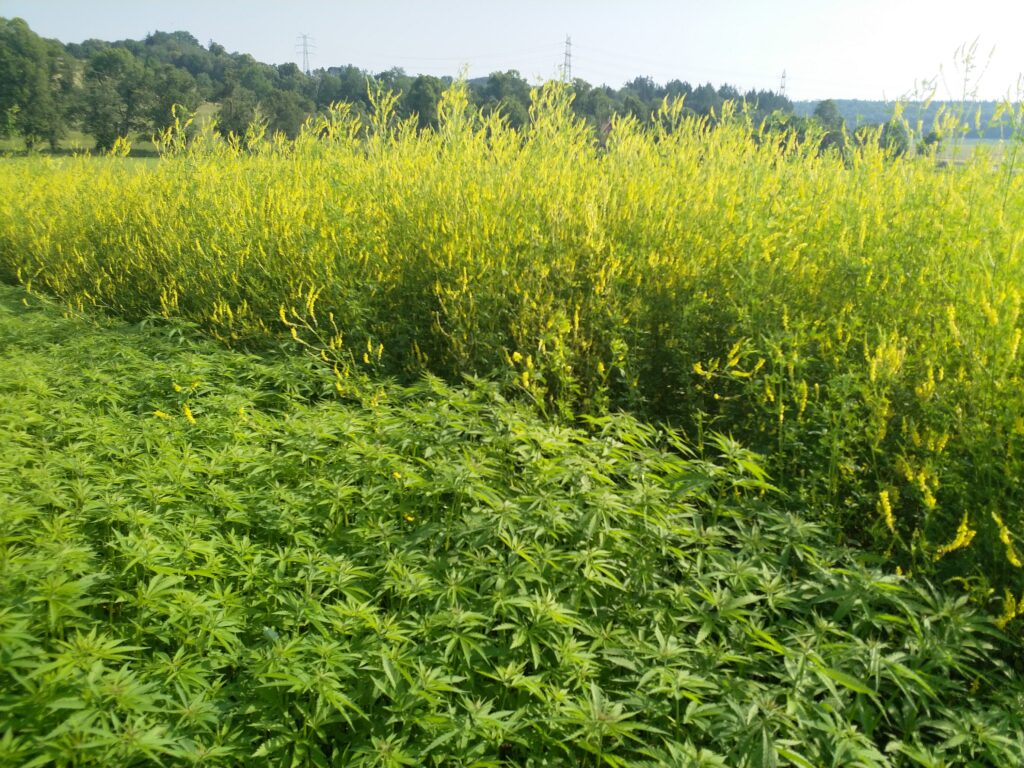
In Spain
In Spain, our partner Instituto Técnico Agronómico Provincial, S.A.U. established demo fields featuring innovative cropping systems to make better use of marginal agricultural areas. Located near Fuentidueña de Tajo (Madrid), this semi-arid area faces challenges like low rainfall (300-400mm), sandy soil with low organic matter, and poor biodiversity. Despite this, ITAP successfully established guayule plantations in late 2023. This spring, they experimented with intercropping safflower and industrial hemp alongside guayule.
In this field ITAP is adopting innovative technologies such as:
A subwater retention system (SWR): a prototype machine provided by Italian CREA Ricerca digged a series of 1m deep trenches then laid a thin plastic sheet and covered it again with soil. This creates an underground reservoir of rainwater that improves water availability directly to the plants roots in dry conditions. Soil sensors and drone flights to closely monitor soil moisture and vegetation health using RGB and multispectral cameras.
Intercropping with crops like safflower and hemp could offer multiple benefits on marginal land:
🔹 Increased productivity by utilizing land more efficiently.
🔹 Natural weed control: potentially reducing the need for synthetic inputs.
🔹 Improved soil health: enhanced biodiversity, nutrient cycling and keeping the soil covered.
These innovative cropping systems have the potential to unlock a new era of bio-based product development while revitalizing underutilized agricultural areas.
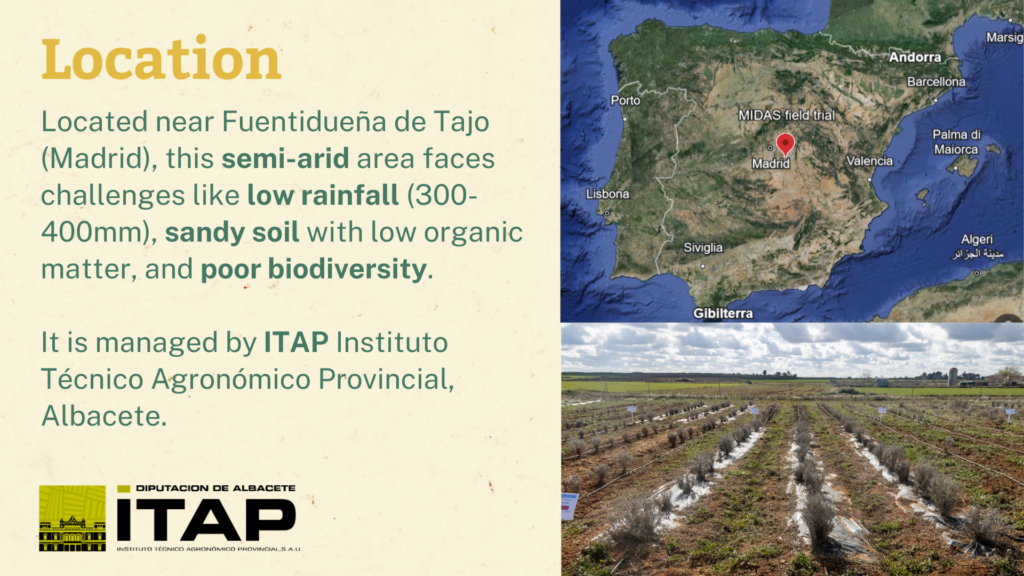
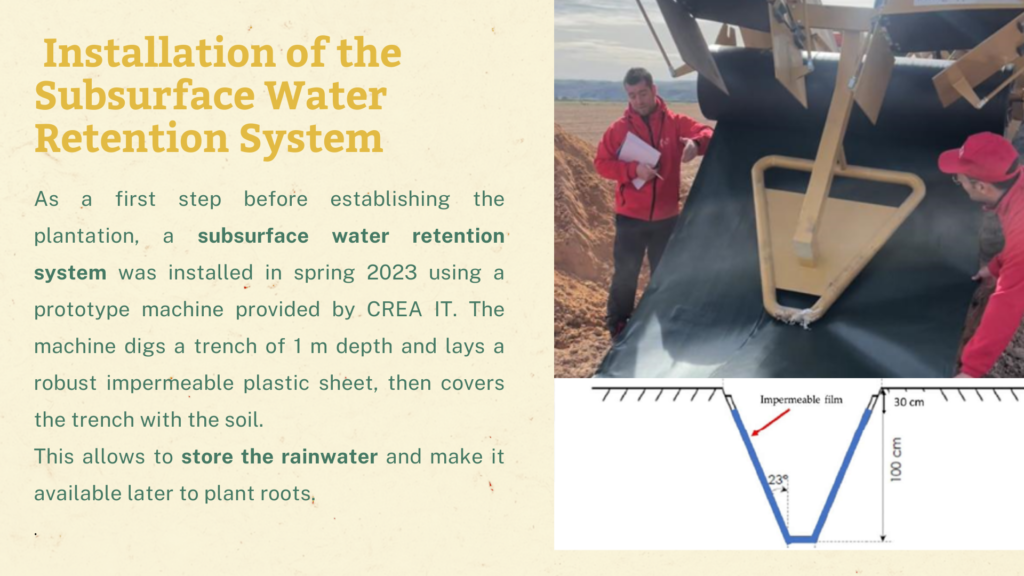
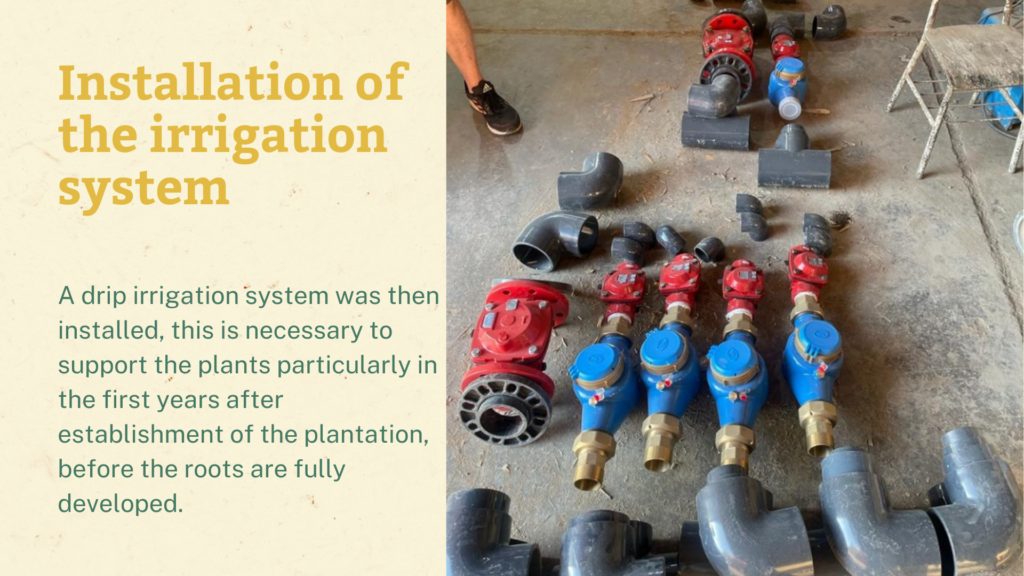
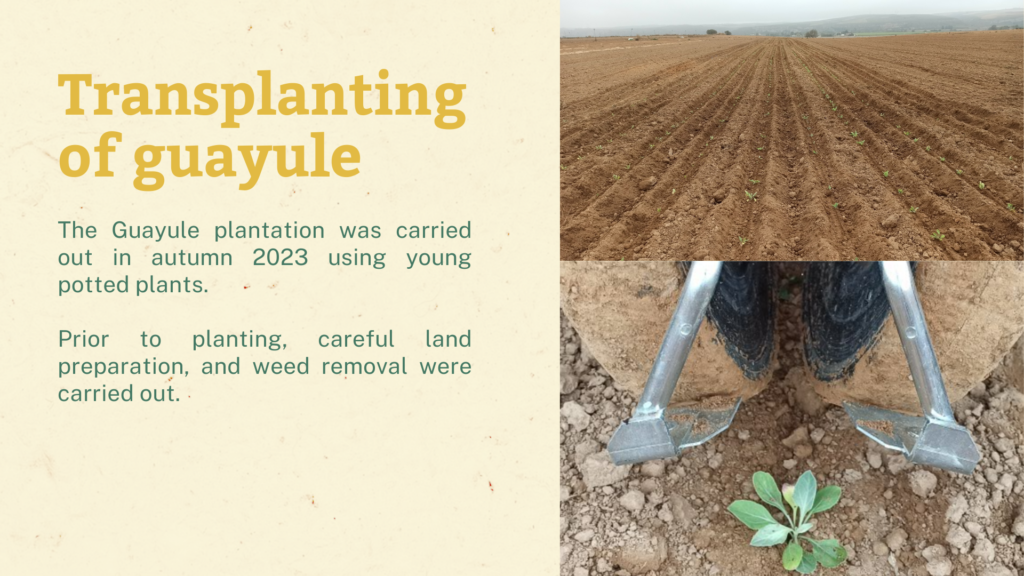
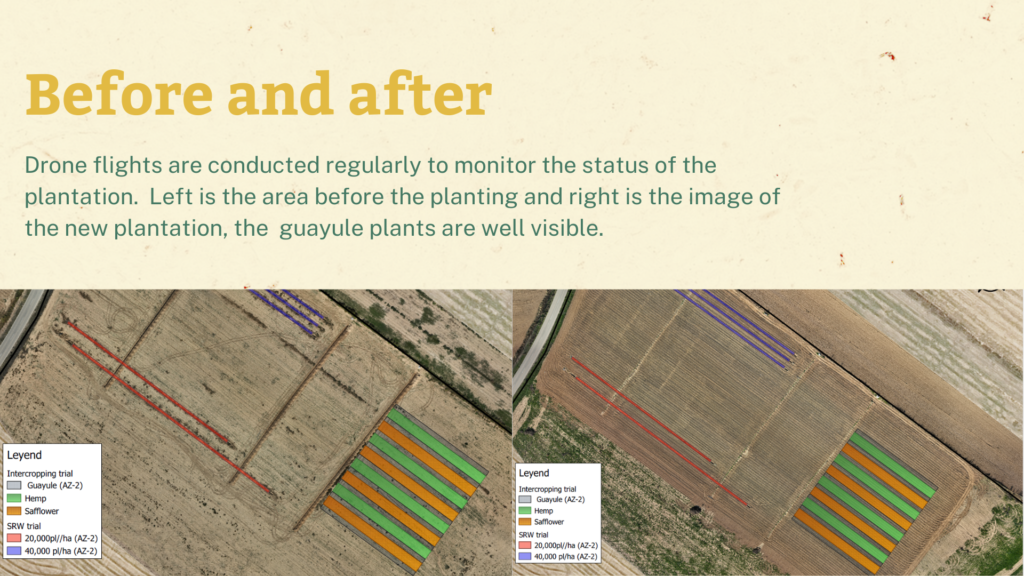
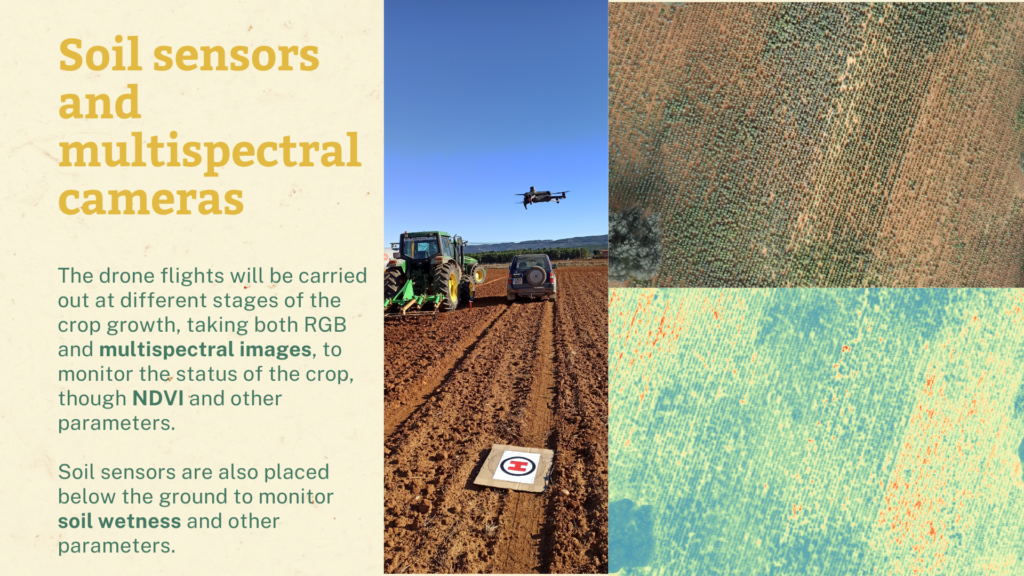
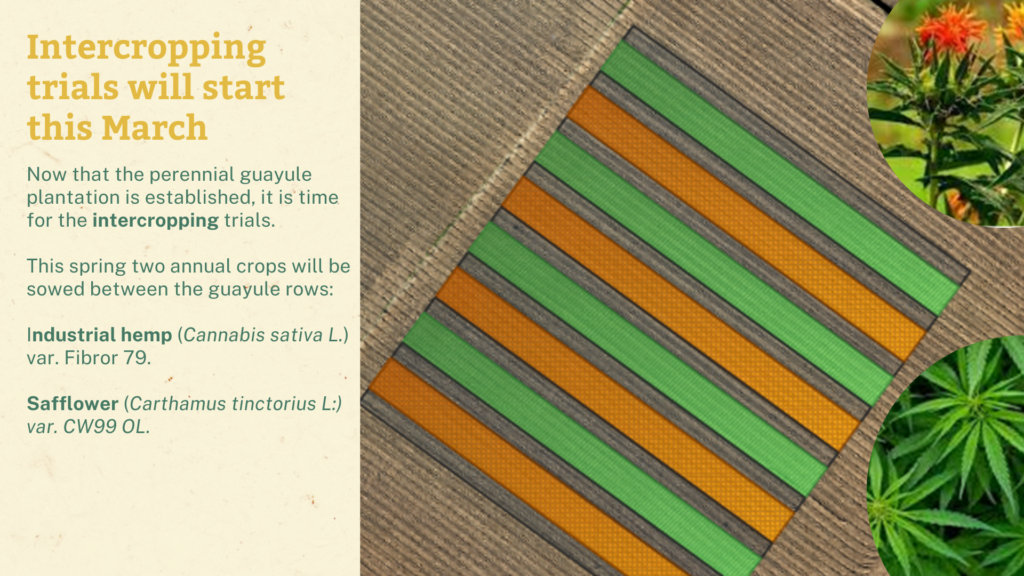
MIDAS project is tackling the challenge of growing industrial crops on marginal lands for bio-based products, stay tuned for more updates from the MIDAS demo sites.

